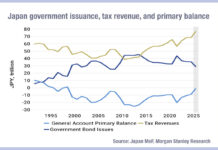A quick straw poll of buy-side traders suggests most believe the electronification of primary markets has stalled somewhat, with twice as many seeing progress plateauing instead of growing in Europe, and slightly more seeing progress stalled in the US than see advances.
This is happening as platform operators go head-to-head competing to increase efficiency in bond issuance, competing to deliver new functionality that will reduce manual processing of trades and increase the speed at which traders can use newly issued bonds.
Clearly progress is being made by the service providers, with S&P Global’s Investor Access tool recently announcing its 600th buy-side firm signed up to use the service.
Olivier Dermaux, is executive director, fixed income strategy in the Global Markets Group at S&P Global Market Intelligence, which runs the Investor Access platform, a longstanding service.
He said, “We very pleased to see the continued adoption of our Investor Access infrastructure by the buy side. The electronification of primary markets remains a key ask and, through the evolution of the tool and drive towards partnership and interoperability, we are striving to meet the asks of the buy side. We look forward to the continued partnership with our sell side and buyside clients as we work to evolve the electronification of the fixed income primary market.”

Jonathan Gray, head of primary markets at Liquidnet also says his firm has seen growth in engagement levels.
“We continue to see a growing appetite from the industry, both on the buy and sell side, for electronic solutions,” he says. “The number of syndicate banks partnering with Liquidnet has doubled in the last 12 months and the market share of deals covered has increased to over 80% in 2023. Half year trading volume in our New Issue Trading business has increased 122% and the user base has grown 25% over the same period.”
While European markets are seen by traders to be more dominated by Investor Access, in the US DirectBooks, backed by a consortium of banks, is perceived as the leader. Bloomberg is a ubiquitous force in both bond markets, but was unable to comment in this article.

“The electronification of the primary markets continues to increase in momentum. DirectBooks is improving both the sell-side and buy-side user experience and has increased the issuances it supports to include investment grade, emerging markets, high yield, and sovereigns, supranationals & agencies (SSAs) across USD, EUR and GBP markets,” said Rich Kerschner, CEO of DirectBooks. “Global buy-side engagement, activity and adoption has shown consistent growth throughout the first half of the year with encouraging progress in our European investor community.”
When we look at progress in the market, there is still a long way to go before a fully electronic new issue process is in place.
As many traders observe, there has been progress in the level of collaboration – notably Tradeweb’s partnership with Investor Access – but it has plateaued with regard to a significant changing of market structure. “Game changing workflows” are not expected to be in place until 2024 at the earliest. One trader noted “We’re effectively testing things.”
The energy to continue with this progress to the next stages is evident across the platforms, but often involves third-parties out of necessity, such as connectivity with Order Management Systems (OMS) in order to create new deals in these systems and use them to transmit of orders to syndicate banks from OMSs.
“Liquidnet enabled its clients to enter orders in new issues electronically, from their OMS, in Q4 2022,” notes Gray. “The New Issue Trading business is the first in Europe to offer an all to all screen based system for trading new issues both pre and post pricing. Using a pre ISIN identifier our clients are able to trade in the grey market electronically … Our technology offers both electronic dissemination of new deals pre trade to our clients and the ‘last mile’ of connectivity to them. This can only be done via working relationships with firms such as Charles River Development and Bloomberg and we share that connectivity with select partners like NowCM and BondAuction who operate and offer value in different ways and parts of the ecosystem.”
This will also require buy-in from both banks and investment firms to handle both sides of the issuance if take-up is to increase.

Carl James, managing director, fixed income strategy in the Global Markets Group at S&P Global Market Intelligence, says, “I recently joined S&P Global Market Intelligence and have seen how strong and active the team is in engaging with sell-side clients and creating deep-level partnerships. The strong theme of simplifying workflows, which the buy-side yearn for, is something we continue to action, through the electronification of primary markets. Both these elements drive our strong growth.”
One thing which traders want all the platforms to do is increase accuracy in pricing, as this is key to automation.
“I do understand that they fully rely on syndicate banks to provide the timing of the pricing,” notes one trader. “But this doesn’t work yet. If they solve this, we can think of automating our future hedges.”
©Markets Media Europe 2023
©Markets Media Europe 2025














